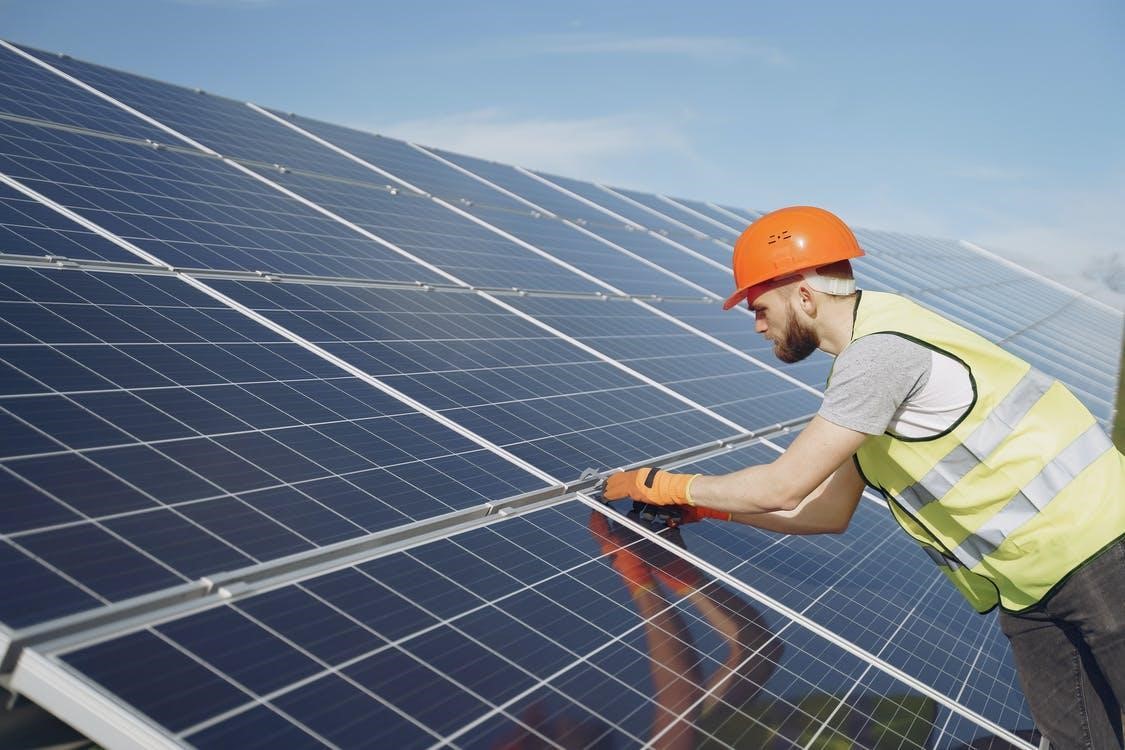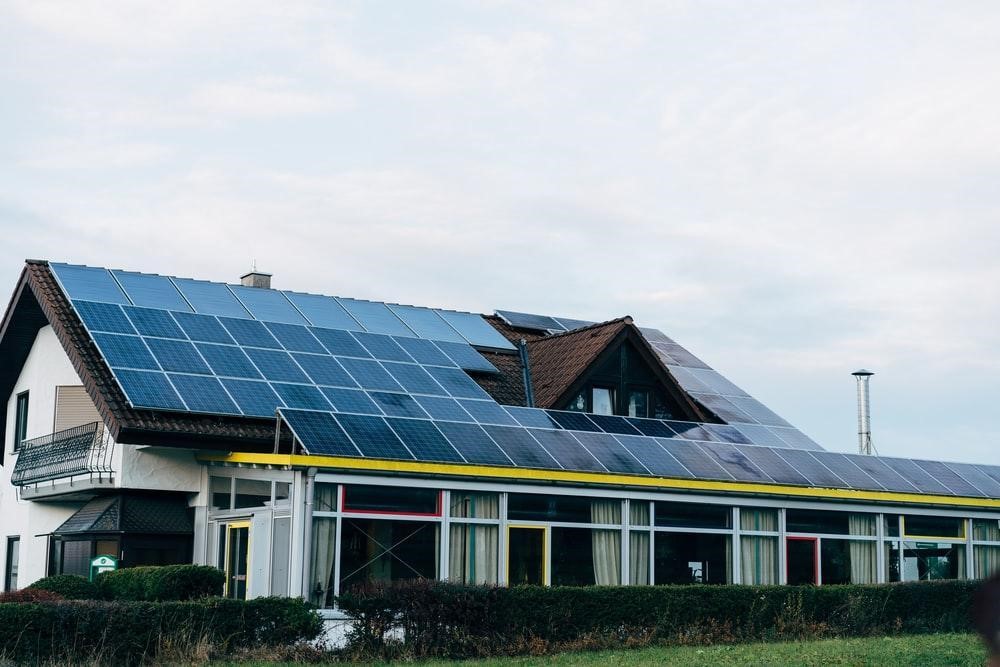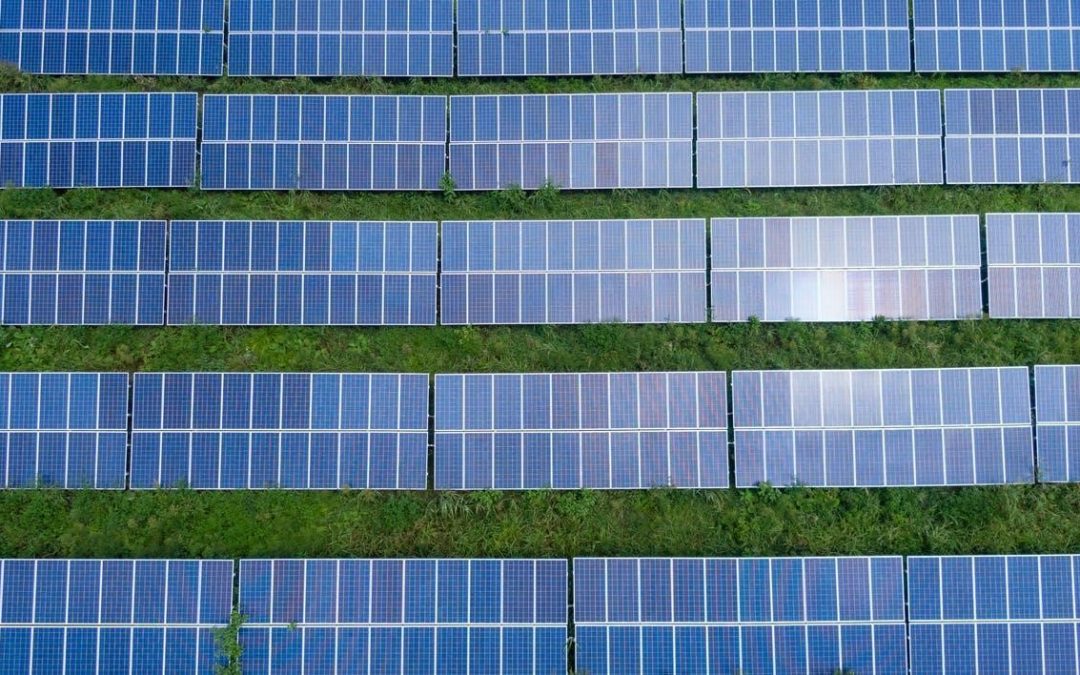For this solar panel calculator how-to guide, we will be sizing a solar power system large enough to fully power an average American home. Following are the variables that you need to account for when calculating how many solar panels you need:
- Your average monthly or yearly energy consumption.
- The Dimensions of the solar panels.
- The wattage of the solar panels that you’re going to install.
- The climate in your locality, and how many hours of sunlight you get.
- How efficient are the solar panels that you’re using for your system?
The reason we refer to the above factors as variables is that they tend to differ from one homeowner to another.
1. Knowing Your Average Monthly or Yearly Energy Consumption

In order to size a solar power system, you first need to know how much energy you need your system to generate. This can only be discerned by knowing your average monthly or yearly energy consumption. The best way to find out how much energy is consumed in your home is to look at your monthly electric bill which usually contains information regarding the current month’s energy usage as well as your previous month’s and annual energy usage.
Knowing that your energy usage varies significantly from month to month, especially when the seasons change, it is not a good idea to size your solar panel system solely on a single month’s energy consumption. Instead, using your annual consumption figures will help you design a system that will serve you better year-round.
It’s important to remember that solar panels aren’t always operating at full capacity. Weather conditions, for example, have the ability to reduce your system’s efficiency. As a result, experts recommend adding a 25% cushion to your average energy consumption to ensure your system doesn’t fall short in fulfilling your energy needs.
1. The Efficiency of Your Solar Panels
The type of solar panels you select for your system will play a huge role in deciding how many solar panels you will need, as well as how frequently they’ll require maintenance and how long they’ll last. PV solar panels have wattage outputs ranging from 150 to 400 watts per panel, depending on cell type, efficiency, and size of the panel.
Polycrystalline, Monocrystalline, and Thin-film are the three main types of solar cell technologies that can be found in modern-day solar panels. Monocrystalline panels are the most expensive in the bunch but they’re also the most efficient with an efficiency that ranges from 15% to 20%. Polycrystalline solar panels on the other hand are less costly, but also less efficient. Their efficiency ranges from 15% to 17%.
Furthermore, some new solar panels have been developed that have few to no gridlines, enabling them to let more sunlight pass through and therefore, produce a higher overall output. These panels are also said to be more efficient and less sensitive to delamination than standard solar cells. All of these considerations play a role in determining how many solar panels you’ll need for your home.
The main takeaway here is that the more efficient solar panels you use for your system, the fewer of them you’ll need to install to meet your average daily energy requirements. Conversely, for low-efficiency panels, you’re going to have to invest in more panels to meet your targeted energy output.
2. How Many Peak Sunlight Hours Do You Get in Your Area?
The potential for solar energy on your roof and in your area as a whole depends on the number of peak sunlight hours you receive in your area. A peak sun hour is a moment of the day when the solar irradiation delivers an average of 1000W of power for each square meter (approximately 10.5 feet) of area. To put it another way, one peak sunlight hour equates to 1000 W/m2 of sunlight each hour.
The peak sunlight hours vary from state to state. This means that a state that receives more peak sunlight hours has the potential to generate more solar energy than a state receiving fewer peak sunlight hours. Knowing this, a homeowner situated in a state with a high number of peak sunlight hours would require fewer solar panels to meet their energy needs compared to a homeowner in a less sunny state, provided both have the same average energy requirements.
3. The Physical Size of the Solar Panels You’re Using
It goes without saying that the size of your roof has a significant impact on the number of solar panels you can install. But did you know that the size of your roof space can influence the type of solar panels you can install?
If you have a large and unobstructed roof area, you have the option to go for a large number of low-efficiency solar panels or for a few high-efficiency panels, whichever option you find to be more feasible. On the contrary, if you only have a limited amount of usable roof space, you may not be able to accommodate a large number of low-efficiency panels. As such, installing fewer high-efficiency panels that would fit into the limited roof space may be your only option for generating enough energy to satisfy your home’s energy needs.
4. Wattage of the Solar Panels

When sizing a solar power system, the wattage of the solar panels you use will obviously play a part in determining how many solar panels you need to install. For instance, if you require a 4kW solar system for your home and you’re using 250-watt panels for the system, you’ll require 16 solar panels. In contrast, if you use 400-watt panels for the same system size, you’ll need only 10 panels.
The Annual Shading Factor
The shading factor is essentially a measure of how much sunlight gets blocked out by surrounding obstacles and is therefore not able to reach your solar panels. Obstructions such as trees and buildings can stand in the way of sunlight getting to your panels and will consequently cast some shade on them.
Since the performance of solar panels directly depends on the amount of sunlight reaching them, even a little amount of shade can reduce the output of your system by a large margin. Knowing this, the higher the annual shading factor in your area, the larger a system you’ll need.
Total Solar Resource Fraction (TSRF)
The TSRF is essentially a measure of the total amount of solar energy that is available for your solar panels to convert into electrical energy. This metric is computed after taking into account the percentage of solar energy available at a site after factoring in shading and how much of this energy will make it to the solar panels depending on their tilt and orientation.
A high-value TSRF value or percentage means that your panels will have a good supply of solar energy and therefore will be able to generate greater output. This means that an installation site with a higher TSRF value or percentage will need a smaller sized system than a site with a lower TSRF value.
Solar Panel Calculator – How to Size a Solar Power System Step-by-Step
In this guide on the step-by-step calculation of the number of solar panels you need, the values used are average values for the entire US. Therefore, when calculating how many solar panels you need, be sure to use the values that are unique to your home and state.
Step #1: Work Out Your Monthly Energy Consumption
According to the U.S. Energy Information Administration, the average American household consumes about 10,715 kWh of electricity each year. This equates to around 893 kWh of energy on a monthly average basis.
Average monthly consumption: 893 kWh
Step #2: Determine How Many Hours of Peak Sun Your Area Receives
The term “peak sun hours” has thoroughly been explained in the subsections above. Generally, most homeowners are unaware of what this factor is or means, making it difficult for them to accurately calculate the number of solar panels they need.
You will find a considerable disparity in the number of peak sunlight hours from one state to another. However, the value observes only slight variation from home to the home located within the same state. Keeping this in mind, it would be wiser to use the average number of peak sun hours in your state or city instead of calculating a specific value for your property.
For the sake of understanding, let’s suppose you are a resident of California which gets 5.82 peak sunlight hours.
Peak sunlight hours: 5.82
Step #3: Calculate the Size of Your Solar Power System
To calculate the size of the system, first, we need to find the monthly peak sun hours.

Now we’ll use the formula given below to figure out how big a solar power system you’ll need for your home.

The fraction is multiplied by 1000 in the formula to convert the kilowatt values into watts. In addition, the 1.15 number is the efficiency factor that accounts for the energy losses during the transformation of solar radiation into electrical energy. The efficiency factor will also vary based on your location and the panels you use. Your solar installer or the solar panel manufacturer will be able to better guide you in this regard.
According to the calculation above, your home will need a 5.8kW system.
Size of the system: 5,800W
Step #4: Calculate How Many Solar Panels You’ll Need
Divide the required capacity of your system by the wattage of the panel you will be using in your system to calculate the number of solar panels you will need. If the value is not an integer, always round up. This means that if you use 250W panels, for example, you’ll need 23.2 solar panels. However, we’ll scale this value up to 24 meaning you’ll have to install 24 250-watt solar panels.
It’s worth noting that the wattages in which solar panels are available may not allow you to install a system that is of the exact capacity that your calculations gather you need. In such a case, your best option would be to size up to the next closest system capacity.
Step #5: Size Your Solar Inverter
As a general guideline, the size of your inverter should be on par with the DC rating of your solar panel system. For example, if you’re installing a 5.8kW solar system, the proposed inverter should be around 5,800 watts. However, there likely won’t be an inverter available in such a capacity so you’ll have to size up or down depending on what your installer recommends.
Step #6: Summarizing
The gist of all the calculations that we have done so far is that to power an average American home situated in an area with 5.82 peak sunlight hours, you’ll need a 5,800W solar system. The number of solar panels you’ll need can be calculated by dividing the system capacity by the wattage of the solar panels you’re using.
Solar Monitoring
Solar system monitoring is a system whereby solar owners can track the performance of their solar energy system. Solar monitors even offer you the option of downloading your monthly energy production and consumption reports allowing you to cross-check your utility bill against these reports for accuracy.
Using the free Ethernet port on your router and your internet connection, each panel in your solar system uploads the power generation data and figures onto the cloud. This data can, then, easily be accessed by any smart device such as your phone or computer anywhere and anytime.
Solar monitoring systems offer many benefits to solar owners such as early detection of system faults and greater savings on energy bills by pointing out high energy consumption trends. That is why it is recommended by experts that you should also install a solar monitor when installing a solar panel system.
Frequently Asked Questions (FAQs)
How Many Solar Panels Do I Need For 500kWh Per Month?
For an energy consumption of 500kWh per month, you’ll require a roughly 3.6kW system. Using 400-watt panels, you’d need to install 9 solar panels.
How Do I Calculate the Number of Solar Panels I Need?
To calculate the number of solar panels you need, you have to divide the required size of your solar system by the wattage of the solar panels you’re using.
How Many Solar Panels are Needed for a 2000 Sq Ft Home?
Typically, a 4kW system would be required for a 2000 sq ft home, which would require 10 400-watt panels. The number of panels employed will obviously grow as the wattage of panels lowers.
How Many Solar Panels Can I Fit on My Roof?
A homeowner with an average-sized roof could install approximately 97 solar panels if they used every square foot of their roof area.
How Many Solar Panels Do I Need to Power a Refrigerator?
The average refrigerator in the United States consumes roughly 57 kWh per month and requires three or four standard solar panels to operate.
Final Thoughts
This how-to guide on calculating how many solar panels you need was aimed to provide you with a rough idea about what goes into designing a solar system. However, we would still recommend you to get the assistance of a professional solar installer, like us, to size your solar power system and install it.
The team at Sec. Services are ready to answer your questions and give you a no-obligation price quote. Feel free to call us at 855-888-3993 or book a consultation online. And we’ll get in touch within 24 hours.


Recent Comments